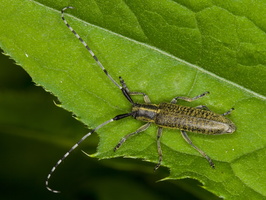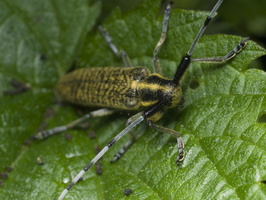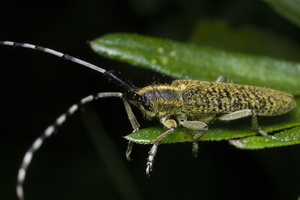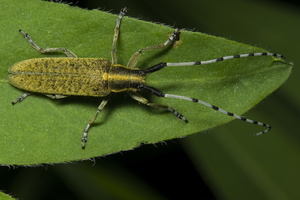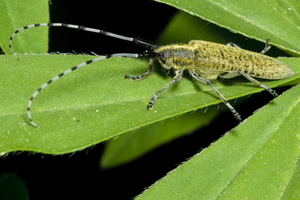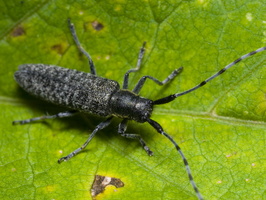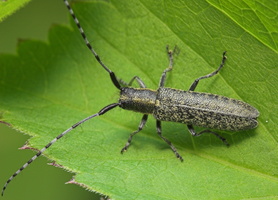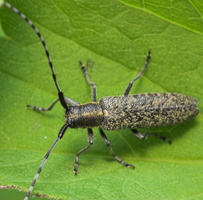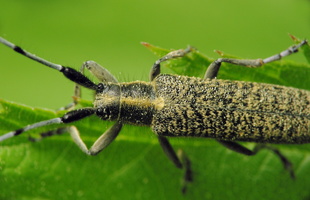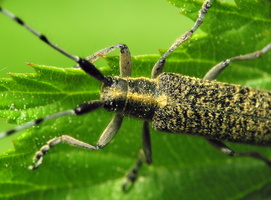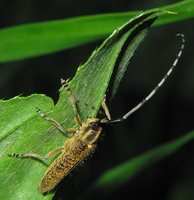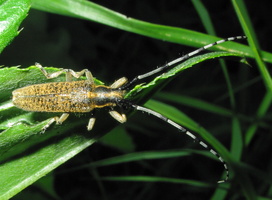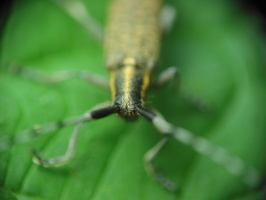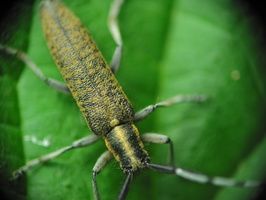- sort orderDefault
Photo title, A → Z
Photo title, Z → A
✔ Date created, new → old
Date created, old → new
Date posted, new → old
Date posted, old → new
Visits, high → low
Random
 home / Insecta · vabzdžiai / Coleoptera · vabalai / Cerambycidae · ūsuočiai / Agapanthia villosoviridescens · žalsvasis stagarinukas
home / Insecta · vabzdžiai / Coleoptera · vabalai / Cerambycidae · ūsuočiai / Agapanthia villosoviridescens · žalsvasis stagarinukas

Agapanthia villosoviridescens · žalsvasis stagarinukas
DE · Scheckhorn-Distelbock, Nesselbock, Linienhalsige Halmbock
EN · golden-bloomed grey longhorn beetle
LT · žalsvasis stagarinukas, graižažiedinis ūsuotis
LV · čemurziežu koksngrauzis
PL · zgrzytnica zielonawa
Adults are diurnal and active from late April or May until August or September; they are generally active in warm weather and readily spotted as they sit with their antennae held high over the body on umbel or thistle flowers. Although most often be seen on umbels they have been recorded from a wide range of host-plants e.g. Carduus, Cirsium, Acenitum, Senecio aquaticus, Eupatoriun cannabicum, Artemesia vulgaris, Urtica dioica. Mating occurs on flowers and foliage during May and June and oviposition follows shortly after; females walk up and down stems, occasionally stopping to chew the plant tissues, until a suitable site is found and then will gnaw a hole into the stem and insert a single egg, or rarely a second, and reseal it with masticated plant material. Larvae emerge after a week or so and begin to mine the stem, they grow quickly and soon occupy the central cavity where they can run rapidly up and down, the stem is consumed from within and the larva works its way down to the roots as it develops, they are generally fully grown by late summer, measuring up to 20mm, and will overwinter in a cavity in the base of the stem or the rootstock. Feeding resumes for a while in the spring before pupation occurs in the roots from March onwards. Larvae are unusual for cerambycids in having transverse rows of tiny bristles on the sixth and seventh abdominal tergites which allow them to grip the stem from within and move rapidly inside, the pupa is also mobile and able to move up and down a pupal cell hollowed out within the base of the stem and the roots and plugged either end with plant material. The pupal stage takes about a month and the freshly-eclosed adult remains within the cell for a week or two before emerging, they will then feed on herbaceous foliage for a while before mating.
Subfamily: Lamiinae · niūrūnėnai
